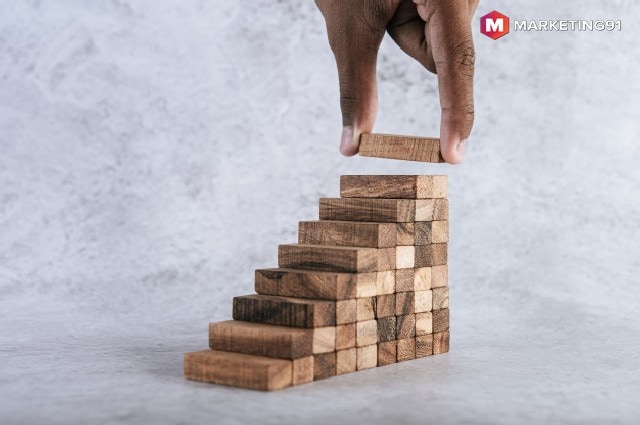Experiential learning is an active process where skills and knowledge are used in a meaningful way. It is a learner-centric approach where learning happens through reflection on doing and experience. It is a distinct form of learning where the emphasis is on individual learning through a supervised and well-planned process.
The experiential learning helps to stimulate and encourage academic inquiry by promoting cultural awareness, career development, and civic engagement.
Table of Contents
Meaning of experiential learning
The experiential learning has adopted a hands-on approach so that learning becomes a fully-involved activity. At the end of the day, knowledge, skills, and experience is what counts in this form of learning, and it is acquired not inside but outside of a traditional classroom via field research, field trips, studies abroad, workshop, studio work, laboratory, internships, apprenticeship, case-based learning, co-operative learning, inquiry-based learning, project-based learning, problem-based learning and service-learning projects.
Experiential-based learning has become the new mantra of the modern world because it has proven its effectiveness by establishing long-lasting behavior changes. The learner does not just understand a new subject or gain some knowledge and skill; he is also developing new behavior and habits along the way.
Experiential learning is described as an immersive process that is used in organizational development, training facilitation, and education. It engages learners of all experience levels, backgrounds, and ages.
This is an active process that requires complete engagement. The process offers a viable platform where the learner can engage, then analyze and later reflect upon his actions. The experience helps him to work things out by himself as the method encourages learning and not teaching. Experiential learning allows learners to identify the changes required in relevance to behavior, attitudes, and skills and implement the said changes to achieve optimal performance in real life.
Elements of experiential learning
The experiential learning concept is based on four primary elements. The theoretical model suggests that human beings are capable of learning because they have a constructivist perspective that is naturally inclined towards learning.
It emphasizes on the point that construction and acquisition of knowledge occur because of experiential transformations and experience. The experiential cycle includes the following components-
1. Concrete experience
This type of experiential learning concept personal experience gained through a hands-on approach. The concrete experience encourages the learner to step out of his comfort zone and try and experiment with new things in both professional and personal lives, for instance, trying to ride a bicycle, learning about new software at work, trying to cook a new dish or taking up a new form of meditation.
Our success and failures will assemble the experience and it, in turn, will build and encourage behavior change. The learner engages in a reinterpretation of an already existing experience in this phase.
2. Reflective observation
This phase of reflective observation puts its emphasis on inner reflection so that a learner can learn from his experiences. The second stage is all about pondering over what went right, what could have improved the experience, and how could it been have done differently to achieve maximum benefits.
The reflective observation experiential learning is the part of analyzing self-actions, observing alternatives and realizing the pros and cons of all deeds.
This phase is about reviewing and reflecting on the new experience so that the learner can identify inconsistencies that have occurred between experience and understanding.
3. Abstract conceptualization
This phase of experiential learning is for brainstorming ideas so that it becomes possible to achieve success. The abstract conceptualization is a stage where the learner can decide what to do next.
He has already identified and understood the areas of concern in the second phase; now is the time to form generalizations and conclusions to plan your strategies.
4. Active experimentation
The final stage of experiential learning is active experimentation where the learner experiments with the ideas. This is the time when he puts his plan in action and tests its worthiness to taste the sweet fruit of success.
He applies the newly gained knowledge to different situations to test the hypothesis in his learning procedure.
Examples of experiential learning
The purpose of experiential learning is to learn new skills through practice and then think critically about the practice to improve it. Let’s take an example to understand the concept of experiential learning. A person working with a trained mechanic will gain new skills that will help him to repair a motorcycle.
The next step for the learner is taking the time to reflect on his action and following devise ways where he can improve and plan a better strategy. The last stage involves new strategies and insights on the learner’s part and putting his plans in action to taste success.
Experiential learning is learning by doing; for example, a child does not start walking by himself. He observes and then learns by a hands-on approach that encourages practicing and refining his ability and technique so that after some time it becomes a habit and then he can walk by himself without any fear of falling.
Types of experiential learning
The different types of experiential learning are as follows-
1. Internship
This is a type of experiential learning where theoretical knowledge is integrated with practical application in a professional setting. The learners are offered opportunities to test their knowledge and skill in career fields.
This professional setting is provided so that they can achieve valuable work experience in the field of their choice. The best thing about the internship is that they last one semester in summer and thus are of shorter duration so that they do not interfere with the actual formal education process. It can be both paid and unpaid.
2. Service-learning
This type of experiential learning is considered a boon for both the community and the learner. Service-learning encourages learning by working and performing a job within the community.
It enables serious reflection by the learner because he comes across some of the most severe issues that a community generally faces, for instance, pollution, lack of excellent and consistent education, poverty and homelessness.
3. Externship
This type of experiential learning offers the learner an opportunity to explore his career option by visiting professionals and experts in the workplace. This can happen via observing daily activities, attending sites, tour o the workplace, meeting with people from the department, attending a meeting with clients, and involvement in a hands-on task or project.
4. Student teaching
This type of experiential learning offers the candidates a chance so that they can practice the skills and knowledge they have developed in the preparation program. It involves on-site experience in a known school.
5. Study abroad
This type of experiential learning offers the learner an opportunity to study overseas within the security of a host family and institution chosen after careful deliberation. It is a chance to learn about another culture and make sure that the credit is transferred to the degree program of the student.
6. Volunteering
This is a type of experiential learning where the learner is allowed to serve in a community because they want to do it and is mostly undertaken via a non-profit organization.
7. Undergraduate research
It is one of the most popular forms of experiential learning that is common at universities. The course connects key concepts with the learner’s active involvement, investigation and research so that he can work out the relevant answers by himself.
8. Apprenticeships
It is a formal program that trains a person for a specific job. An apprenticeship is for those learners who have already decided on the career path they wish to follow. They sign a contract and join the program to learn work-related specific skills and knowledge.
This type of experiential learning is an integration of work experience and on-the-job training. Generally, an apprenticeship program lasts for one year to six years, and at the end, the learner is given a formal qualification and degree that will enable him to work independently in his chosen field.
9. Fellowships
This type of experiential learning is generally offered by foundations, corporations and educational institutions in the form of tuition to support the training of a learner for a specific period. This acts as a boon for people who want to pursue research or a particular study.
10. Fieldwork
This type of experiential learning enables the learner to apply the learned skill and knowledge in the field instead of the classroom. This is an excellent opportunity to use the learned knowledge in the outside world through practical application.
11. Role-playing
This type of experiential learning aims to replicate a system, process, phenomenon or entity. It tries to predict aspects related to issues being studied to show real outcomes and behavior of possible conditions.
12. Practicums
This type of experiential learning places the learner in a supervised situation that is paid. This opportunity helps in developing competencies of the learner.
Here is a video by Marketing91 on Experiential Learning.
Benefits of experiential learning
The Numerous benefits of experiential learning are as follows-
- The experiential learning method offers the learner an opportunity to apply whatever they have been taught to solve any challenge related to real-world. It becomes possible for the learner to understand underlying principles, procedures, and processes and adapt and experiment the practice to achieve optimal outcomes.
- The experiential learning process helps in developing leadership capabilities to new levels
- Increases motivation to learn because experiential learning is all about active participation.
- Experiential learning encourages participation in team-based activities so that they can learn about team building in a professional environment
- The process enables easy transfer of skills and knowledge because of effective communication
- Experiential learning aids in memory retention and ultimately leads to the development of lifelong skills and learning
- The process offers an opportunity for reflection and analyzing.
- It involves a trial by error. When a learner is undertaking an important task, the learning process helps him to know which way is the best and which one can prove a mistake
- Experiential learning helps to engage the creative cells of the brain to seek the most unique and satisfying solution to the task-on-hand through critical thinking.
- The development of reflective practice becomes habitual and helps to boost the journey from novice to expert
- The method of experiential learning increases the engagement levels of a learner
- It encourages the learner to take ownership for his actions
- The experiential learning accelerates the process of learning because a practical hands-on approach is long-lasting and effective compared to theory learning. It is an integration of theory and practice because whatever a learner has learned from the books or by observing others can now be applied practically. This helps in remembering ideas and concepts by understanding the effects and behavior related to change.
- The concept encourages the growth and development of many skills, for instance, decision-making and problem-solving.
- The experiential learning is all about working on situations that are a replication of real-world problems. This gives the learner absolute freedom to think, analyze and operate differently without fear of taking wrong decisions. This approach helps the learner to keep up his confidence levels.
- Replication of real-world situations helps to know whether the learner has been able to understand the concept behind it or not. Experiential learning is a great help in assessing whether learning has been accurate and more comfortable for the learner or not.
- This form of learning provides access to real-time coaching
- The debriefing session helps to receive feedback easily from team members as well as experts. Because of the feedback, it is easy to know whether a learner has made any improvements or not. The accomplishments are obvious.
Limitations of experiential learning
The limitations of experiential learning are as follows-
- Experiential learning is useful only when the content is used in real-life settings
- It is not of any use to inexperience learners
- The learning outcome is not predictable
- The learner may experience negative emotion if he is unable to grasp the new skills and knowledge
- It is a time-consuming process where the learner will need enough time to undergo all the four stages in the experiential learning cycle
- It is imperative to provide access to all the relevant resources about the learning otherwise the process loses its actual meaning
- If the learner is not given enough time for reflection, the process is not fulfilling its objective
- Experiential learning is bound by the constraints placed by the people imparting the knowledge. How is the learning process addressed matters a lot at the end of the day
- Sometimes guidelines start acting as constraints, and they take away the free will of the learner, who no longer feels comfortable in his work environment. This encourages hesitation on the part of the learner while implementing his plans, ideas, and strategies in a real-world scenario
- Inadequate skills of the group can harm the experiential process of all the learners
- Facilitating, monitoring and organizing experiential learning is a daunting task that everyone does not want to undertake willingly
Liked this post? Check out the complete series on Careers





